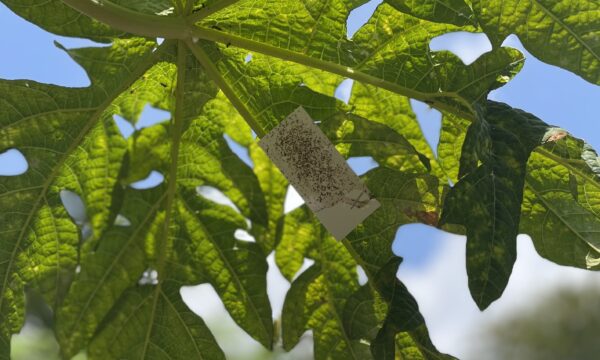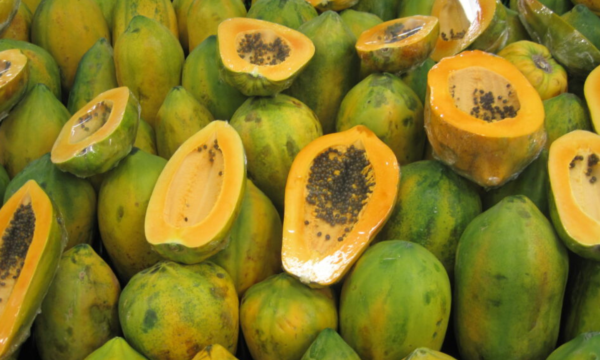
It is possible that in the future, agricultural crops will be able to produce their own fertilizer (© Pexels)
Researchers have successfully engineered bacteria to use nitrogen at night to create chlorophyll for photosynthesis. This new development could reduce the need for human-made fertilizers on agricultural crops, thus reducing the cost and manpower required for fertilizer application.
Research undertaken at Washington University, led by Professor Himadri Pakrasi of the Department of Biology and director of the International Center for Energy, Environment and Sustainability (InCEES), has shown that this may be possible. So far this technology has only been developed using bacteria, but in the future it is hoped that this will be developed using plants and eventually crops to revolutionize the agriculture industry.

The application of fertilizers on fields can lead to improved plant and soil health, as well as increased resistance to pests and diseases (© Pexels)
With the world’s population increasing exponentially, there are higher demands for food. Coupling this, due to increasing agricultural threats from pests, diseases and climate change, we are facing greater food security risks such as reduced crop yields and loss of soil fertility. Soil conditions are a big problem for agriculture, particularly throughout Sub-Saharan Africa where areas of land can experience prolonged periods of drought and uneven rainfall. This is why there is a global need for improved fertilizer use, to improve the ability of crops to withstand these fluctuating environmental conditions and produce the required yields. Fertilizers provide plants with the necessary nutrients for improved growth, such as potassium for improved stem vigor, nitrogen for increased growth and phosphorous for improved seed germination and root development. By applying fertilizers we are improving soil and plant health as well as the ability for plants to resist pest and diseases.
Aside from the use of fertilizers to provide nitrogen, there is also another major source that could be made available. The Earth’s atmosphere is roughly 78% nitrogen and was the target source for this study. Researchers working with Professor Pakrasi engineered bacteria that could use the atmospheric nitrogen in a process known as nitrogen fixing to produce the energy required for photosynthesis.
“Cyanobacteria are the only bacteria that have circadian rhythm,” said Pakrasi in a recent article from Science Daily, “interestingly, Cyanothece photosynthesize during the day, converting sunlight to the chemical energy they need as fuel, and fix nitrogen at night after removing most of the oxygen created during photosynthesis through respiration.”

This study has a revealed a potential future in which there won’t be a need for the human-intensive process of applying fertilizer (© Public Domain CC0)
The team identified 35 genes which were accountable for this process, 24 of which were transferred into another bacteria, Synechocystis, to determine the ability to transfer this nitrogen fixing process into another living organism. This was shown to be successful, with Synechocystis fixing nitrogen at a rate of 30% of Cyanothece.
The next steps for the team will be to study the finer details of this process, and identify the specific genes required for this nitrogenous process. With further development of this work with bacteria, it is hoped that with collaboration this study will be taken to the next level to develop nitrogen-fixing plants. If crops were able to use nitrogen in the atmosphere to increase their growth, this would benefit not only global soil health, but also reduce the struggle for improving fertilizer application throughout the agriculture industry.
With the publication of this study, the issues have been raised behind global soil health and the management practices that need to be better implemented to improve soil fertility. Whilst innovations such as this are taking place in the lab, here is what CABI has been doing to reach smallholder farmers in terms of Integrated Soil Fertility Management (ISFM):
“To improve the livelihoods of smallholder farmers and farm productivity, we need to tackle the issue of poor soil fertility. The OFRA project was designed to help improve efficiency and profitability in fertilizer use in 13 sub-Saharan countries within the framework of ISFM practices. This has been a successful project, with over 70 fertilizer optimization tools (FOT) developed and over 3500 extension workers and agrodealers trained on how to use FOT to advise farmers,” stated George Odour, Project Manager of OFRA, CABI. “I am hopeful for the future of soil health with the development of exciting novel studies such as this and that ISFM practices are applied further to help combat this pressing challenge to global food security.”
If you would like to read further information on the subjects covered in this article, please see the links below:
4 Comments
Leave a Reply
Related News & Blogs
‘Sowing the seeds’ for food security in Uganda: CABI supports training for Quality Declared Seed production
CABI has been working with Zirobwe Agali-Awamu Agribusiness Training Association (ZAABTA), the Ministry of Agriculture, Animal Industry and Fisheries (MAAIF), the National Agricultural Research Organisation (NARO), and Integrated Seed Sector Developmen…
21 May 2025





[…] New study shows that bacteria can be engineered to create their own fertilizer using air […]
[…] New study shows that bacteria can be engineered to create their own fertilizer using airIn “Agriculture” […]
[…] 7. New study shows that bacteria can be engineered to create their own fertilizer using air (August) […]
[…] New study shows that bacteria can be engineered to create their own fertilizer using airIn “Agriculture” […]